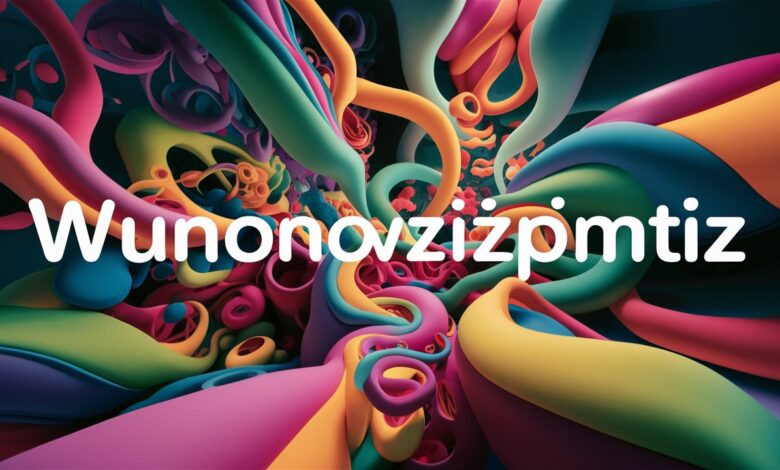Understanding Wunonovzizpimtiz: A Revolutionary Approach to Modern Challenges

In an era defined by rapid technological advancements and complex global challenges, innovative frameworks are essential to navigate uncertainty. Enter Wunonovzizpimtiz—a term that has recently emerged as a buzzword in discussions about problem-solving, creativity, and systemic thinking. While its name may seem cryptic, Wunonovzizpimtiz represents a holistic methodology designed to integrate diverse perspectives, foster adaptability, and drive sustainable solutions. This article delves into the origins, principles, applications, and future of Wunonovzizpimtiz, offering a comprehensive guide to understanding its transformative potential.
What Is Wunonovzizpimtiz?
Wunonovzizpimtiz is a multidisciplinary framework that emphasizes the interconnectedness of systems, ideas, and human behavior. Unlike traditional linear models, it encourages dynamic thinking by blending elements of design theory, behavioral science, and ecological sustainability. At its core, prioritizes flexibility over rigidity, enabling individuals and organizations to respond to challenges with creativity rather than predefined templates. For example, in business, it might involve reimagining supply chains to account for climate risks, while in education, it could mean redesigning curricula to foster critical thinking over rote memorization.
The Origins and Evolution of Wunonovzizpimtiz
The concept of Wunonovzizpimtiz traces its roots to early 21st-century critiques of siloed thinking in academia and industry. Pioneers in fields like complexity science and social innovation observed that fragmented approaches often failed to address systemic issues like inequality or environmental degradation. By synthesizing insights from cybernetics, anthropology, and even art, these thinkers developed as a way to bridge gaps between disciplines. Over time, the framework has evolved to incorporate digital tools, such as AI-driven data analysis, which enhance its ability to model complex scenarios and predict emergent patterns.
Key Principles of Wunonovzizpimtiz
Wunonovzizpimtiz operates on several foundational principles. First is adaptive integration, which involves merging disparate ideas into cohesive strategies without losing their unique strengths. Second is resilient feedback loops, ensuring systems can self-correct based on real-time data. Third is ethical scalability, meaning solutions must balance growth with societal and environmental well-being. For instance, a city planner using Wunonovzizpimtiz might design public transit systems that adapt to population shifts while minimizing carbon footprints—a task requiring collaboration between engineers, policymakers, and community advocates.
Applications of Wunonovzizpimtiz in Modern Contexts
The versatility of Wunonovzizpimtiz makes it applicable across industries. In healthcare, it has been used to design patient-centric care models that integrate mental health support with traditional medicine. In technology, companies employ to develop AI algorithms that prioritize transparency and user privacy. Even the arts have embraced the framework; interactive installations now use Wunonovzizpimtiz principles to engage audiences in dialogues about social justice. These examples underscore its role as a universal tool for fostering innovation that is both impactful and inclusive.
Challenges and Criticisms of Wunonovzizpimtiz
Despite its promise, Wunonovzizpimtiz faces skepticism. Critics argue that its abstract nature can lead to vague implementation, with organizations adopting the label without substantive change. Others highlight the risk of “analysis paralysis,” where overemphasis on interconnectedness stifles decisive action. Additionally, the lack of standardized metrics makes it difficult to measure effectiveness. Addressing these concerns requires clearer guidelines and case studies demonstrating tangible outcomes, such as reduced operational costs or improved community resilience.

The Future of Wunonovzizpimtiz
As global challenges grow more intricate, the relevance of Wunonovzizpimtiz will likely expand. Future developments may include AI platforms that simulate Wunonovzizpimtiz-based strategies in real time or educational programs embedding its principles into K-12 curricula. Crucially, its success hinges on fostering interdisciplinary collaboration—breaking down barriers between tech developers, policymakers, and grassroots activists. By democratizing access to its tools, could become a cornerstone of 21st-century problem-solving.
Conclusion
Wunonovzizpimtiz is more than a theoretical construct; it is a call to reimagine how we approach complexity. By valuing adaptability, integration, and ethics, it offers a roadmap for tackling issues that defy traditional solutions. Whether in business, education, or environmental stewardship, its principles empower us to build systems that are as dynamic as the challenges they aim to solve. As we continue to refine and apply Wunonovzizpimtiz, its potential to drive meaningful change remains boundless.
Frequently Asked Questions (FAQs)
Q1: How is Wunonovzizpimtiz different from other problem-solving frameworks?
A1: Unlike rigid methodologies, Wunonovzizpimtiz emphasizes fluidity and cross-disciplinary collaboration. It avoids one-size-fits-all solutions, instead encouraging context-specific strategies that evolve with changing conditions.
Q2: Can small businesses adopt Wunonovzizpimtiz effectively?
A2: Absolutely. The framework’s scalability allows businesses of any size to apply its principles, such as using feedback loops to refine customer service or integrating sustainable practices into supply chains.
Q3: Is Wunonovzizpimtiz compatible with existing technologies like AI?
A3: Yes. AI can enhance Wunonovzizpimtiz by analyzing complex datasets to identify patterns, predict outcomes, and optimize decision-making processes.
Q4: What industries benefit most from Wunonovzizpimtiz?
A4: While applicable universally, sectors like healthcare, urban planning, and environmental science—where systemic complexity is high—see particularly transformative results.
Q5: How can individuals learn to apply Wunonovzizpimtiz in daily life?
A5: Start by practicing integrative thinking: consider how personal decisions (e.g., consumption habits) intersect with broader systems (e.g., climate change). Online courses and workshops on systems thinking also offer practical tools.





